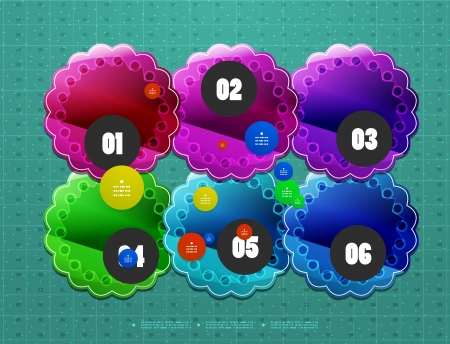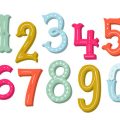The Unique Voices of Oracle and Tarot Cards
When exploring the world of intuitive card reading, many Americans are drawn to both Tarot and Oracle cards for their capacity to inspire personal growth, spiritual reflection, and fresh perspectives. Each system offers a unique voice—one rooted in centuries-old symbolism and structure, the other thriving on interpretive freedom and modern relevance. Understanding these fundamental differences is key to integrating their strengths and creating a more holistic approach to self-discovery.
Symbolism: Archetypes vs. Open Expression
Tarot decks, with their 78 cards split between the Major and Minor Arcana, carry rich archetypal imagery that resonates with universal themes—journeys, challenges, triumphs—that echo across American storytelling traditions from cinema to literature. Oracle cards, meanwhile, provide a wide-open canvas: their symbols may range from angelic beings to affirmations or animal spirits, allowing users to connect with whatever imagery speaks most directly to their current questions or emotional states.
Structure: Tradition Meets Flexibility
One of Tarot’s defining features is its structured system—a roadmap that many American seekers appreciate for its reliability and historical depth. Each card position in a spread can convey nuanced meaning, providing readers with a framework for deep analysis. In contrast, Oracle decks often break free from such constraints; they can contain any number of cards, and their meanings are usually more direct or thematic. This flexibility appeals to those who value creative self-expression and adaptability in their spiritual journey.
Interpretive Flexibility: A Spectrum of Insight
For Americans who blend eclectic spirituality with practical wisdom, the interpretive spectrum between Tarot and Oracle cards offers room for both intuition and guidance. While Tarot invites analytical exploration through set associations (like numerology or elemental energies), Oracle cards encourage spontaneous insight—making it easy for users to draw immediate inspiration without needing extensive study or memorization.
Resonating with American Spirituality
This duality mirrors broader American cultural values: respect for tradition balanced with an embrace of innovation. By recognizing the unique voices of both Oracle and Tarot cards, readers can tap into a dynamic dialogue between structure and spontaneity—an approach that aligns perfectly with the diverse spiritual landscape of the United States.
2. Why Blend? Embracing Multidimensional Insight
In the American tradition of problem-solving, blending tools and perspectives is often the key to breakthrough solutions—think of cross-disciplinary teams in Silicon Valley or integrated wellness approaches that combine both Eastern and Western medicine. Similarly, integrating Oracle cards with Tarot taps into this spirit of synergy, offering a multidimensional approach to intuitive guidance. While Tarot decks are structured with archetypes and established symbolism, Oracle cards provide open-ended messages and personalized affirmation. When combined, these decks layer structured insight with flexible intuition, amplifying clarity and opening new pathways for self-reflection.
The Amplification Effect: Beyond Single-Lens Guidance
Blending Oracle and Tarot mirrors the American value of diversity—just as varied perspectives foster innovation, mixing decks brings richer interpretations. Tarot’s detailed spreads help pinpoint underlying patterns or challenges, while Oracle cards offer direct encouragement or fresh perspective on next steps. This dual-lens method mirrors how Americans often approach personal growth: first identifying the root issue (analysis) and then seeking motivational support (action-oriented coaching). The result? Readings become more holistic, actionable, and deeply resonant.
Comparing Single-Deck vs. Blended-Deck Approaches
| Approach | Characteristics | Benefits |
|---|---|---|
| Tarot Only | Structured, Archetypal, Predictive | Detailed analysis; deep exploration of themes |
| Oracle Only | Flexible, Affirmative, Open-ended | Straightforward guidance; emotional reassurance |
| Blended | Layered Insights, Synergistic Messages | Holistic clarity; multidimensional support; enhanced intuitive flow |
The Takeaway: Holistic Guidance for Modern Challenges
For those navigating modern American life—where complexity is the norm—integrating Oracle cards with Tarot parallels the holistic strategies used in everything from therapy to business leadership development. It encourages embracing nuance and multiple sources of wisdom, fostering not just answers but empowered next steps. By layering these tools, you cultivate a reading style that’s as dynamic and versatile as the world around you.

3. Hands-On Integration: Practical Techniques
Blending Oracle cards and Tarot in a single reading is both an art and a science, inviting a rich tapestry of intuitive insight. Whether you’re just starting out or have years of experience shuffling decks, these step-by-step strategies can help you weave both systems together for deeper guidance—tailored for American readers who appreciate flexibility and personalization in their spiritual practices.
Step 1: Framing Your Reading
Begin by setting a clear intention for your session. Decide if you want Tarot to provide the main structure (such as past-present-future) and use Oracle cards for overarching themes or affirmations, or vice versa. For example, ask, “What energy should I bring into my day?” Pull an Oracle card first to set the tone, then lay out Tarot cards to explore specifics.
Step 2: Using Oracle for Clarification
If you hit a complex or ambiguous message in your Tarot spread—a common scenario—draw an Oracle card to clarify the situation. In American readings, this is especially helpful when clients seek actionable advice or need encouragement in challenging circumstances. The direct language of many Oracle decks can cut through confusion and offer comfort.
Step 3: Spread Variations That Blend Both Decks
The “Bookend” Method
Start and end your Tarot spread with an Oracle card. The first Oracle card sets the overall energy; the last provides a takeaway or affirmation, creating a sense of narrative closure that resonates well with U.S. clients who value story-driven insights.
The “Layered Insight” Technique
Place one Tarot card and one Oracle card side-by-side for each position in your spread (for example, mind-body-spirit). This allows nuanced comparisons and highlights both symbolic depth and intuitive guidance—perfect for those who want comprehensive answers.
Tips for Beginners and Pros
If you’re new to combining decks, start small: pull one Oracle card alongside a simple three-card Tarot spread. As you grow more comfortable, experiment with larger spreads or invite clients to choose which deck to draw from at key moments—an interactive approach that fits well with American preferences for agency in personal readings.
By intentionally integrating Oracle and Tarot cards using these hands-on techniques, you’ll discover fresh layers of meaning and empower your practice with adaptability that speaks to diverse needs across the U.S. spiritual landscape.
4. Crafting Your Personal Practice
Blending oracle cards with tarot offers an open canvas for self-expression, allowing you to shape a spiritual and intuitive practice that feels genuinely yours. Here’s how you can cultivate an authentic fusion approach while remaining mindful of cultural and spiritual diversity in the American context.
Selecting the Right Decks
Your journey begins with choosing decks that resonate personally. Consider both aesthetics and the core messages of each deck, as well as their origins and intended uses. American communities are beautifully diverse—some decks draw from specific cultural or spiritual traditions. Honor this by researching deck creators, symbolism, and intended meanings.
| Deck Type | Key Features | Considerations |
|---|---|---|
| Tarot | 78 cards, structured system (Major/Minor Arcana) | Traditional imagery; often used for detailed insight |
| Oracle | Varied number of cards, flexible themes | Diverse motifs; check for cultural context or appropriation |
Finding Your Intuitive Voice
Integration is not just about shuffling two decks together; it’s about listening to your inner guidance. Begin with simple spreads, perhaps drawing one card from each deck and reflecting on their interplay. Ask yourself: Do these messages align? Where do they challenge or support each other? Journaling your impressions can help clarify patterns in your readings and strengthen your unique interpretive style.
Tips for Intuitive Development:
- Spend time meditating with your decks before readings.
- Trust initial impressions—even if they differ from guidebook definitions.
- Create a ritual space that includes symbols meaningful to you and respectful of all cultures represented in your tools.
Navigating Cultural and Spiritual Sensitivities
The U.S. is a tapestry of beliefs and backgrounds. When integrating decks, especially those inspired by Indigenous, African American, Latinx, or Asian traditions, be mindful not to appropriate sacred symbols or practices. Instead, approach such decks with respect—learn from reputable sources, acknowledge origins in your practice, and avoid making claims outside your lived experience.
Cultural Awareness Checklist:
- Research Origins: Know who created the deck and why.
- Acknowledge Inspiration: Credit traditions that inform your practice.
- Sensitivity First: If unsure about a symbol or ritual, seek guidance from community members or educational materials.
This conscious blending not only deepens your readings but also contributes to a more inclusive metaphysical community—one where intuition honors both personal truth and collective respect.
5. Navigating Challenges: Common Pitfalls and Solutions
Blending oracle cards with tarot brings a unique richness to intuitive practice, but it’s not without its challenges. One of the most common pitfalls is encountering conflicting messages between decks—tarot may suggest introspection while an oracle card encourages action. Another hurdle is deck overwhelm: with so many options, readings can feel scattered or unfocused. Drawing on American values of self-reliance and resilience, you can overcome these obstacles by developing clear strategies and trusting your inner compass.
Recognizing Conflicting Messages
When oracle and tarot cards seem to send mixed signals, don’t rush to discard one or the other. Instead, approach the situation as an opportunity for deeper insight. Just as Americans value independent thought, use critical thinking to analyze how each card’s message might relate to different aspects of your question or life context. Sometimes what looks like contradiction is actually layered guidance, prompting you to consider multiple dimensions before making decisions.
Managing Deck Overwhelm
If you find yourself pulling too many cards or relying on multiple decks for every reading, it’s time to streamline your approach. Set a clear intention before drawing any cards and stick to a predefined spread or number of pulls. This mirrors the American emphasis on practical problem-solving—creating structure allows intuition to flourish without descending into chaos. Remember: quality over quantity yields more actionable insight.
Actionable Advice for Resilient Practice
- Set boundaries: Decide ahead of time how many decks and cards you’ll use in a session.
- Journal responses: Write down both converging and diverging insights to spot patterns over time—an approach rooted in self-accountability.
- Trust your judgment: Lean into personal sovereignty by prioritizing messages that resonate most deeply with your lived experience.
Cultivating Confidence Through Consistency
The process of integrating oracle and tarot isn’t about finding a single “right” answer—it’s about building confidence in your own interpretive skills. As you regularly navigate challenges and refine your methods, you’ll embody the resilient spirit that characterizes American individualism: learning from setbacks, adapting as needed, and ultimately crafting a divination practice uniquely tailored to you.
6. Real-Life Stories: Successes and Surprises
Integrating Oracle cards with Tarot has opened doors for countless readers across the United States, each bringing their own flavor of experience to the mix. Here are a few real-life stories from American practitioners who have found magic in this blended approach.
Discovering Hidden Layers: Emily’s Journey
Emily, a yoga instructor from Portland, shared how blending Oracle and Tarot cards deepened her personal readings. She started by pulling a daily Tarot card for guidance, then added an Oracle card to clarify the theme. “One day, I drew the Tower from the Tarot deck—never a comforting sight—but followed it with an Oracle card labeled ‘Renewal.’ That combo shifted my perspective from fear to possibility. It helped me embrace change rather than dread it.”
Transformative Healing: Michael’s Experience
Michael, a veteran and life coach from Dallas, described using both decks during group workshops. “Tarot gives my clients a narrative structure, while Oracle cards introduce gentle affirmations. I once had a client struggling with self-worth. The Tarot revealed the Five of Pentacles (feeling left out), but the accompanying Oracle card said, ‘You Are Loved.’ She broke down in tears—it was the first time she truly felt seen in years.”
Unexpected Insights: Jasmine’s Business Breakthrough
Jasmine, an entrepreneur from Atlanta, began incorporating both decks into her strategic planning sessions. “Tarot highlighted areas of stagnation in my business, but it was an Oracle card that prompted me to collaborate instead of compete. That insight led to a partnership that doubled my revenue in six months!”
Testimonials from Online Communities
The digital sphere is full of similar success stories. On Reddit forums and Facebook groups dedicated to divination, users frequently share how mixing decks leads to ‘aha!’ moments. One user wrote, “I used Tarot for specifics and Oracle for vibe checks during a tough decision—together they pointed me toward the right job offer.” Another commented, “Blending decks helped me trust my intuition more because I saw recurring themes show up in both systems.”
A Pattern of Transformation
These stories echo a common thread: integrating Oracle and Tarot doesn’t just add cards—it multiplies clarity and empowerment. Whether seeking reassurance, facing tough choices, or craving deeper self-knowledge, American readers find that blending these tools often brings about profound shifts—sometimes subtle, sometimes seismic—that pure logic alone can’t explain.
7. Resources and Community: Next Steps
To deepen your journey into blending oracle cards with tarot, tapping into American-centric resources and communities is essential. The United States has a thriving ecosystem of authors, websites, and online spaces dedicated to intuitive card reading. Here’s how you can leverage these assets for ongoing growth and meaningful connections.
Recommended Books for Integrated Practice
Consider starting with books that emphasize practical integration and cross-deck insights. Titles like “The Tarot Handbook” by Angeles Arrien and “The Oracle Card Journal” by Colette Baron-Reid offer step-by-step guidance tailored for readers interested in combining systems. Both authors are celebrated in the American metaphysical community for their accessible language and hands-on exercises, making them ideal for both beginners and seasoned practitioners.
Websites & Online Learning Platforms
American sites like Biddy Tarot provide comprehensive guides, articles, and even podcasts on tarot and oracle card synergy. For those who prefer video-based learning, platforms such as YouTube feature educators like Ethony Dawn and The Tarot Lady, who regularly discuss hybrid spreads and multi-deck techniques. These resources often reflect current trends and language familiar to U.S.-based audiences.
Online Communities & Local Meetups
Engaging with fellow readers can accelerate your progress. Consider joining Facebook groups like “Tarot Nerds” or “Oracle Cards & Tarot Community USA,” where members share experiences, questions, and new spread ideas daily. Reddit forums such as r/tarot also host active discussions relevant to American practitioners. For real-world interaction, Meetup.com lists local tarot circles in most major U.S. cities—perfect for finding study buddies or attending workshops.
Continued Inspiration & Collaboration
Sustaining your development requires both inspiration and accountability. Follow American creators on Instagram or TikTok who post daily draws or deck combinations; their content often sparks new approaches and keeps your practice fresh. Additionally, many U.S.-based metaphysical stores host live events or Zoom workshops—these are excellent opportunities to network, ask questions, and witness how others blend decks in real time.
Pursuing further learning is not just about acquiring knowledge but also about building relationships within a vibrant community. By leveraging books, digital content, and social channels rooted in American culture, you’ll find ample support for refining your integrative approach to tarot and oracle cards—ensuring your practice remains dynamic and inspired.


